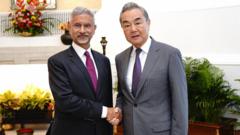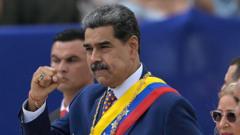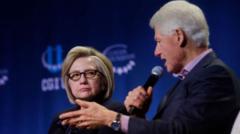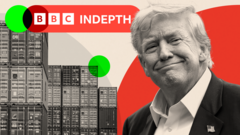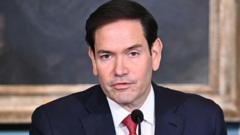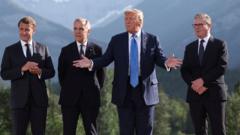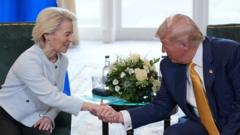The World Trade Organization (WTO) has announced that anticipated tariffs from the US government are set to decrease global trade volumes this year, with particular ramifications for North America. Although the current trends indicate a sharp downturn, some regions, such as Asia and Europe, are projected to experience modest growth.
WTO Warns of Global Trade Decline Due to US Tariffs
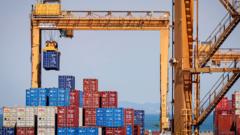
WTO Warns of Global Trade Decline Due to US Tariffs
The World Trade Organization forecasts a reduction in global trade amidst increasing tariffs imposed by the United States, affecting markets differently across regions.
The World Trade Organization (WTO) has issued a concerning forecast, suggesting that global trade will contract in 2025 as a direct consequence of tariffs imposed by the United States, especially under President Donald Trump's administration. At a press conference in Geneva, WTO chief Ngozi Okonjo-Iweala articulated her alarm over the deteriorating relationship between the US and China, calling it a "really worrying" development.
The WTO has reported that the current estimates indicate a decline in global goods trade by 0.2%, a stark revision from an earlier projection anticipating a 2.7% increase. This contraction is particularly pronounced in North America, where trade is expected to plummet more than 10%. Ralph Ossa, the WTO's chief economist, noted that the imposition of tariffs casts a shadow of uncertainty over trade policies, negatively affecting export flows and overall economic activity.
Simultaneously, the United Nations Conference on Trade and Development (UNCTAD) has released a report projecting slower global growth rates, predicting only a 2.3% ascent in 2025, which is below the 2.5% threshold often associated with potential recessions.
Despite expectations of a challenging environment for US trade, the WTO revealed favorable outlooks for other regions. Asia and Europe are forecasted to see modest growth in both their exports and imports, with contributions from these areas remaining positive for world trade dynamics. Additionally, the WTO's report highlighted a significant development – its inaugural forecast for services trade, projecting a 4% growth in this sector by 2025.
Since taking office, President Trump's administration has been characterized by a rapid succession of tariff announcements. The intent behind these tariffs has been framed as a means to bolster the US economy by encouraging domestic consumption and manufacturing. However, critics express that revitalizing US manufacturing is an intricate challenge that may take decades, suggesting short-term economic hardship.
Following the announcement of substantial levies against numerous trade partners, Trump has since moderated his stance by instituting a temporary halt on tariffs for all countries except China. Such fluctuations in policy have contributed to an unsettled marketplace, with US stock indices reflecting declines amidst the backdrop of ongoing trade tensions.
As the situation unfolds, the impact of tariffs will continue to be monitored closely as businesses and economists navigate the complexities of international trade relations.


